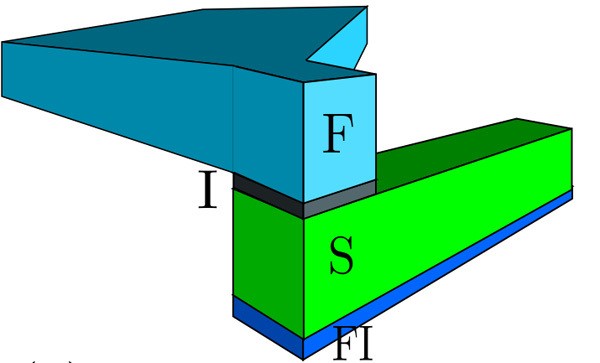LARGE THERMOELECTRIC POWER FROM A COMBINATION OF MAGNETS AND SUPERCONDUCTORS
Phys. Rev. Lett. Editor’s suggestion.

Large thermoelectric power from a combination of magnets and superconductors thermoelectric devices can cool materials by passing currents, or convert temperature differences into electric power. However, especially metallic structures have a very poor thermoelectric performance, and therefore most thermoelectric are made of semiconductors. Now Asier Ozaeta and F. Sebastian Bergeret from the Mesoscopic Physics Group at the CFM (San Sebastian) in collaboration with researchers from the University of Jyväskylä and Aalto University (Finland), have shown how a proper combination of magnetic metals and superconductors could allow reaching very strong thermoelectric conversion efficiency. The electronic structure of semiconductors and superconductors looks superficially similar, because both contain an “energy gap”, a region of energies forbidden for the electrons. The difference between the two is that doping semiconductors allows moving this energy gap with respect to the average electron energy. This is in contrast to superconductors, where the energy gap is symmetric with respect to positive and negative energies, and therefore the thermoelectric effect from positive energy electrons cancels the effect from the negative energy electrons. In the work published recently Ozaeta, Bergeret and the international research group showed how this symmetry can be broken by the presence of an extra magnetic field, and driving the electric current through a magnetic contact. As a result, the system exhibits a very large thermoelectric effect. Because conventional superconductors require temperatures of the order of a few Kelvin, this mechanism cannot be used directly in consumer devices such as portable coolers or waste heat converters. However, it could be used in accurate signal detection, or a similar mechanism could be applied in semiconductors to improve their thermoelectric performance. Converting heat to electricity or vice versa Thermoelectric effects were found already in the 1830’s, when the Estonian scientist Thomas Johann Seebeck observed a voltage caused by a temperature difference, and a French physicist Jean Charles Athanase Peltier discovered the reciprocal effect, capable of converting electric current to temperature differences. These phenomena have been used in many applications ranging from thermometry to cooling car seats and as power sources for space missions. The efficiency of such devices is typically quite low. If it could be improved, the thermoelectric conversion would be immediately taken into use to convert the waste heat in industrial processes or for example car engines into useful electricity. Some metals turn at low temperatures to superconductors, losing entirely their electrical resistance. It was long believed that superconductors exhibit no thermoelectric effects. However, in his Nobel lecture 2003, Vitaly Ginsburg described the topic as poorly understood. The research published yesterday brings new insight into this question and allows studying phenomena in more complicated hybrid structures. The published work was chosen as an “Editor’s suggestion” category in Physical Review Letters, recommending articles for wide range of people because of their clarity.



